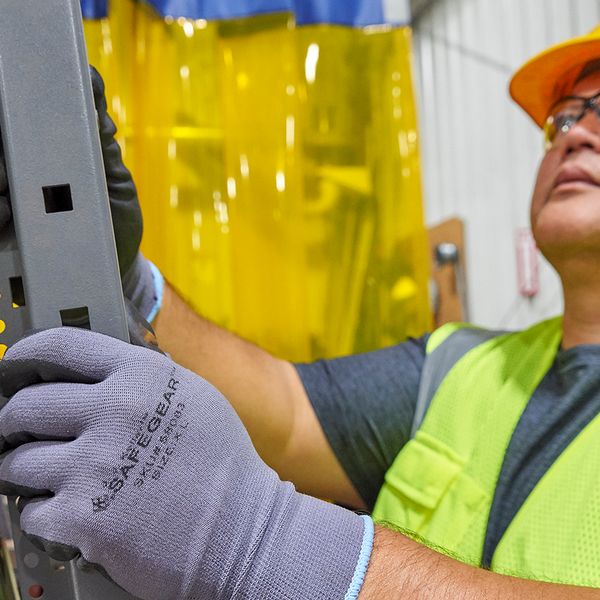3 stunning OSHA enforcement memos peel back curtain
OSHA posted three memos in the last couple weeks. The eye-opening documents relate to the enforcement of the Walkaround rule, musculoskeletal disorder (MSD) recordkeeping, and inspection exemptions. These memos are directed to internal OSHA offices and inspectors. Yet, they reveal how the agency is targeting employers.
Walkaround representative memo
OSHA issued the Worker Walkaround Representative (rep) final rule in April. However, the rule does not kick in until May 31. To help OSHA officers consistently apply the rule, the agency sent out an interim memo dated May 10. The memo is the go-to instruction for officers until the agency updates its Field Operations Manual.
The first part of the memo explores the changes made by the rule. It also offers several reasons a third-party rep could make a positive contribution to an OSHA inspection. These relate to language and communication abilities, as well as knowledge, skills, or experience with hazards/conditions in the workplace or similar workplaces.
The memo’s second part covers:
- Choosing the highest ranking onsite official or union employee rep when employees are represented by a certified or recognized bargaining agent;
- Asking the established safety committee or employees at large to select the employee walkaround rep;
- Determining whether an employee rep is a third party;
- Noting the basis for why a third-party rep is reasonably necessary and not requesting the third party to validate credentials, qualifications, or skills unless there’s a dispute/objection; and
- What to do if employees are not represented by an authorized rep, there’s no chosen/agreed upon employee rep, or there’s no safety committee.
The memo’s last part explains the OSHA officer’s right to deny accompaniment of any individual that interferes with a fair/orderly inspection. Moreover, the officer has authority to resolve disputes over authorized reps. These rights have not changed with the rule, the memo claims. If an employer refuses or interferes with an employee rep, the memo lists several consequences. Seeking a warrant is one option for OSHA. Finally, the memo references OSHA’s FAQs for the rule.
MSD-related recordkeeping memo
A 15-page memo instructs OSHA officers in how to figure out whether MSDs are recordable under 29 CFR 1904. The memo focuses on when the only treatment given is first aid, active release techniques (ART), and/or exercises and stretching. The memo is dated May 2 but was posted in recent weeks. It’s divided into several sections:
- Background — This section goes over the injury/illness recordkeeping criteria. It reminds officers that each criterion operates independently of the others.
- First aid — This section explains that cases of work-related MSDs are generally not recordable if the only treatment is first aid. OSHA considers the treatments listed at 29 CFR 1904.7(b)(5)(iii) to be first aid. This is regardless of the professional status of the person providing treatment. The memo tells how a doctor’s order to rest every half hour to apply ice may make the case recordable. The agency reminds OSHA officers that repeated applications of first aid might indicate that the employer is not providing necessary medical care to the employee.
- ART — This section clarifies that OSHA considers ART to be first aid. This is no matter the professional status of the person providing the treatment. Yet, an injury would be recordable if the application of ART exceeds what’s considered "massage.” Also, the use of ART to treat a work-related injury/illness is recordable if it results in job transfer, restricted work activity, or days away from work.
- Exercise and stretching — This section states that when an employee exhibits symptoms of a work-related injury/illness, a recommendation to conduct exercise/stretching to treat a work-related injury/illness makes the case recordable. This is even if the treatment is to be done at work or at home. Similarly, this is regardless of the professional status of the person making the recommendation.
The memo suggests OSHA officers review medical records. Also, several questions for employers, ART practitioners, and employees are provided for the officer to use.
OSHA inspection exemption memo
In recent weeks, OSHA also posted a memo with a “replacement of Appendix A” for directive CPL 02-00-051. It includes an overhauled list of over 470 industry subsectors that are exempted from programmed OSHA safety inspections. The exemption applies, however, only when:
- Ten or fewer employees are employed at all times during the previous 12 months, and
- The days-away, restricted, or transferred (DART) occupational injury/illness rate is below 1.7 for 2022.
Even if an employer qualifies, OSHA may inspect in response to health hazards, imminent danger, complaints, a fatality, an incident with two or more hospitalizations, or other situations listed in the directive.
Key to remember
Three OSHA memos are directed to internal OSHA offices and inspectors. They reveal how the agency ticks when it comes to the Walkaround rule, MSD recordkeeping, and inspection exemptions.



















































